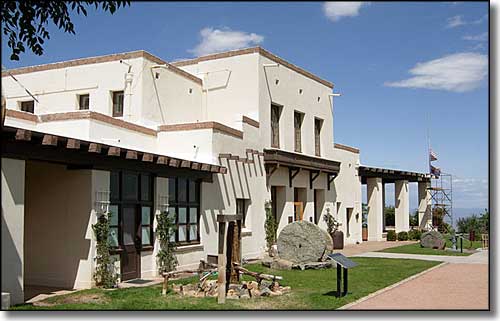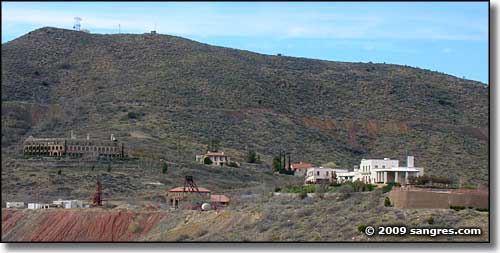
Jerome and the Douglas Family

The Douglas Mansion
In 1876, three prospectors staked claims on some rich copper ore deposits in the mountains between today's Cottonwood and Prescott, the capitol of Arizona Territory in those days. In 1883, they sold their claims to the United Verde Copper Company. United Verde built a mining camp of canvas and board shacks and named the place in honor of the company's principal investor: Eugene Jerome. While hopes for profits ran high, the location made it extremely dificult and the venture folded within 2 years. The cost of operating the mine and transporting the ore was simply too high.
After William A. Clark (one of the "Copper Barons" of Butte, Montana) bought United Verde and built a narrow gauge railroad to the site, Jerome started to come into its own. By the early 1900's, the United Verde was the largest producing copper mine in the territory. Jerome was also becoming a "real" town with 2 churches, an opera house, several civic buildings and a school.
James Stuart "Rawhide" Douglas bought the Little Daisy Mine in Jerome and began developing a larger operation there in 1912. Mining was in the Douglas family blood as his grandfather had been involved in copper mining in Canada and his father James was a mining engineer and scientist who traveled all over the world. At a mine in Nacozari, Mexico, James Stuart had the brilliant idea of using rawhide to reduce wear on the rollers of a cable car incline, hence his "Rawhide" nickname.
Shortly after Douglas arrived in Jerome, his workers cut into a particularly rich copper ore body and the profits really started to roll in. Then came World War I and the price of copper ran very high. In 1916, he built the Douglas Mansion on the hill above the Little Daisy Mine and then built the Little Daisy Hotel near the mine as a dormitory for his miners. The Mansion was a magnificent adobe structure that had plenty of room for his family and even included a hotel for visiting investors and mining officials.
In 1922, Douglas' oldest son Lewis left Jerome to serve in the Sixth Arizona Legislature in Phoenix. Eventually his political career took him to Washington, DC, and then to England in 1947 as US Ambassador. The younger son, James, also left Jerome for education and then traveled the world for several years as a renowned geologist. He returned to Jerome and the Little Daisy Mine as production was slowing down and he saw the operation through to its' closing days in 1938.
Copper production at the two bonanza mines in Jerome peaked in 1929 and the quality of the ore bodies deteriorated after that. Phelps Dodge took over the United Verde in 1935 but declining profits finally forced the closure of that mine in 1953.

The Douglas Mansion and some copper mine sites around it, the remains of the Little Daisy Hotel is on the left
